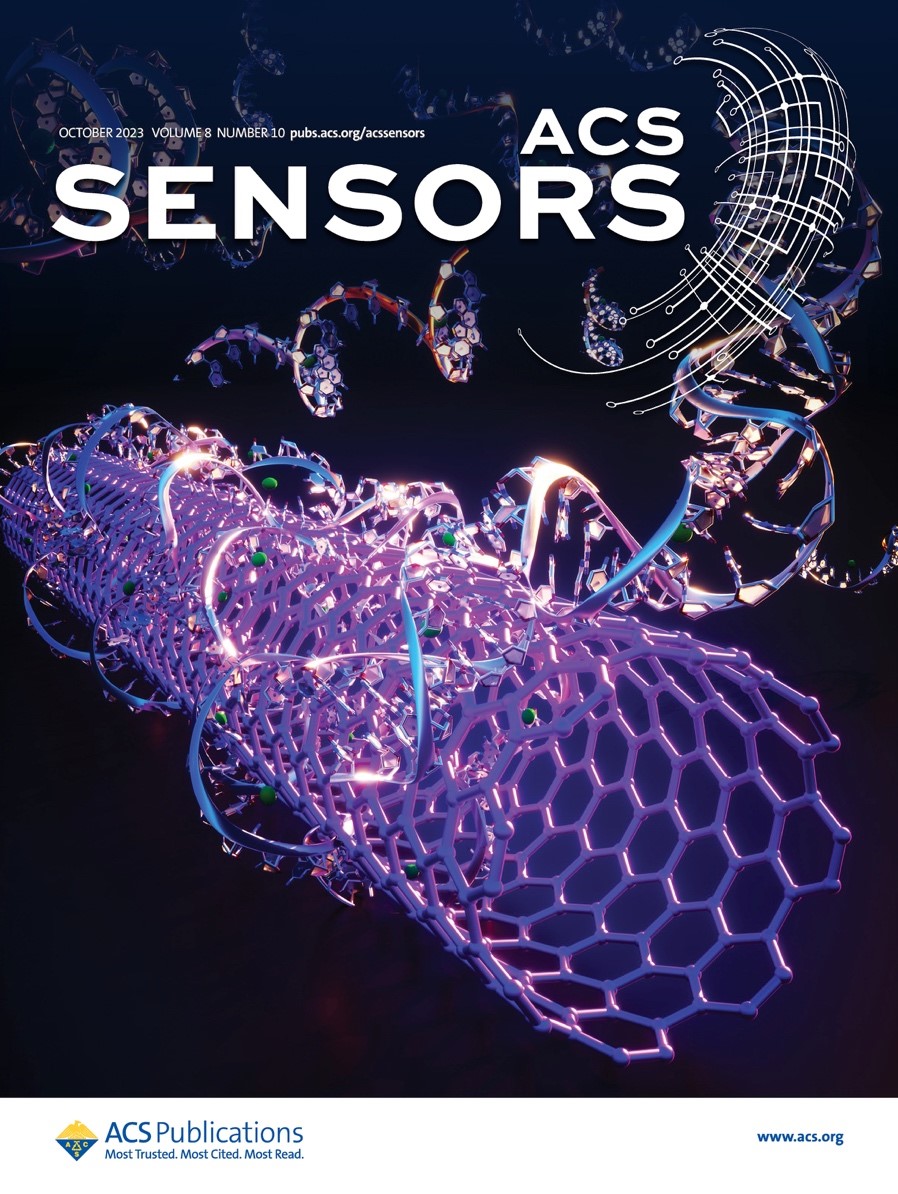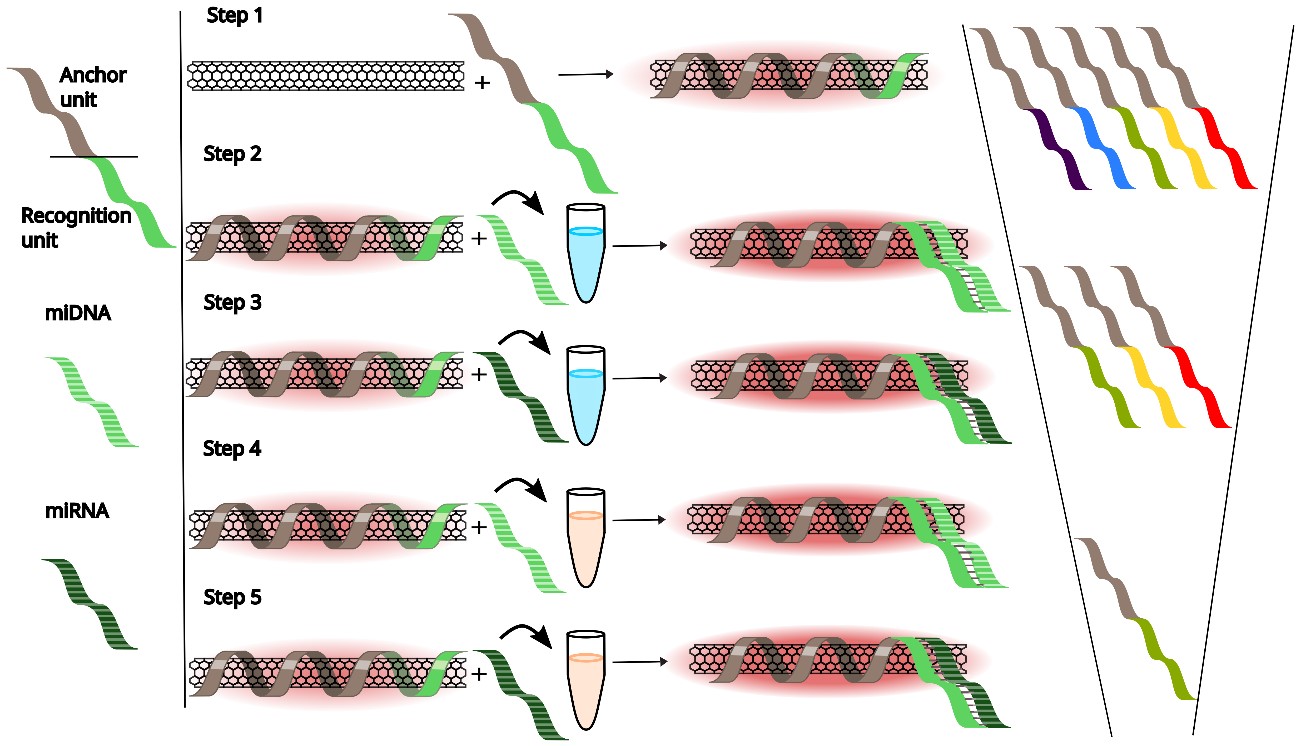Nanosensors selection for the detection of microRNA biomarkers for heart attack
The study focuses on utilizing fluorescent nanosensors, emitting in the near-infrared range, for detecting microRNA (miRNA) disease biomarkers. miRNAs play crucial roles in cellular processes, and their altered expressions signify diseases, rendering them promising biomarkers. Optical detection using fluorescent nanosensors is advantageous due to the immediate readouts, small sample volumes, and photostability. The work was published in ACS Sensors and was chosen for the cover image of the journal.

In the picture: The cover image of the journal shows SWCNT functionalized with DNA to detect miRNA molecules.
Prof. Gili Bisker’s lab focuses on single-walled carbon nanotubes (SWCNTs) that exhibit fluorescence in the near-infrared (NIR), aligning with the biological transparency window. The sensing relies on changes in their fluorescence intensity or wavelength shifts due to analyte binding to their surfaces. Synthetic functionalization of the nanosensors, tailored for a molecular target of interest, enables specific interactions with the analytes in biological environments.
The study targets miRNA biomarkers of acute myocardial infarction, also known as a heart attack. The research workflow involves selecting potential sensors based on their response to DNA and RNA targets in simple (buffer) and complex (serum) environments. Out of five sensors tested, some displayed promising fluorescence responses to their target sequences in buffer, from which 1 demonstrated sensitivity and specificity for its target in serum. Further experiments indicated the sensor’s selectivity, even in a mixture of various miRNA strands.

In the scheme: The selection and elimination process starts with 5 different sequences, 3 of which show promising responses in the buffer. Out of these 3, one exhibits a fluorescence response to the target miRNA in a complex biological environment (serum).
The study, led by Dr. Adi Hendler-Neumark in Prof. Bisker's lab, demonstrates the potential of SWCNTs as optical sensors for heart attack biomarkers detection in biological environments. It highlights the importance of serum-based experimentation, which is essential for sensor development. The elimination method employed here could be extended to other biomarker libraries and nanosensor technologies, offering a robust pipeline for sensor development.

